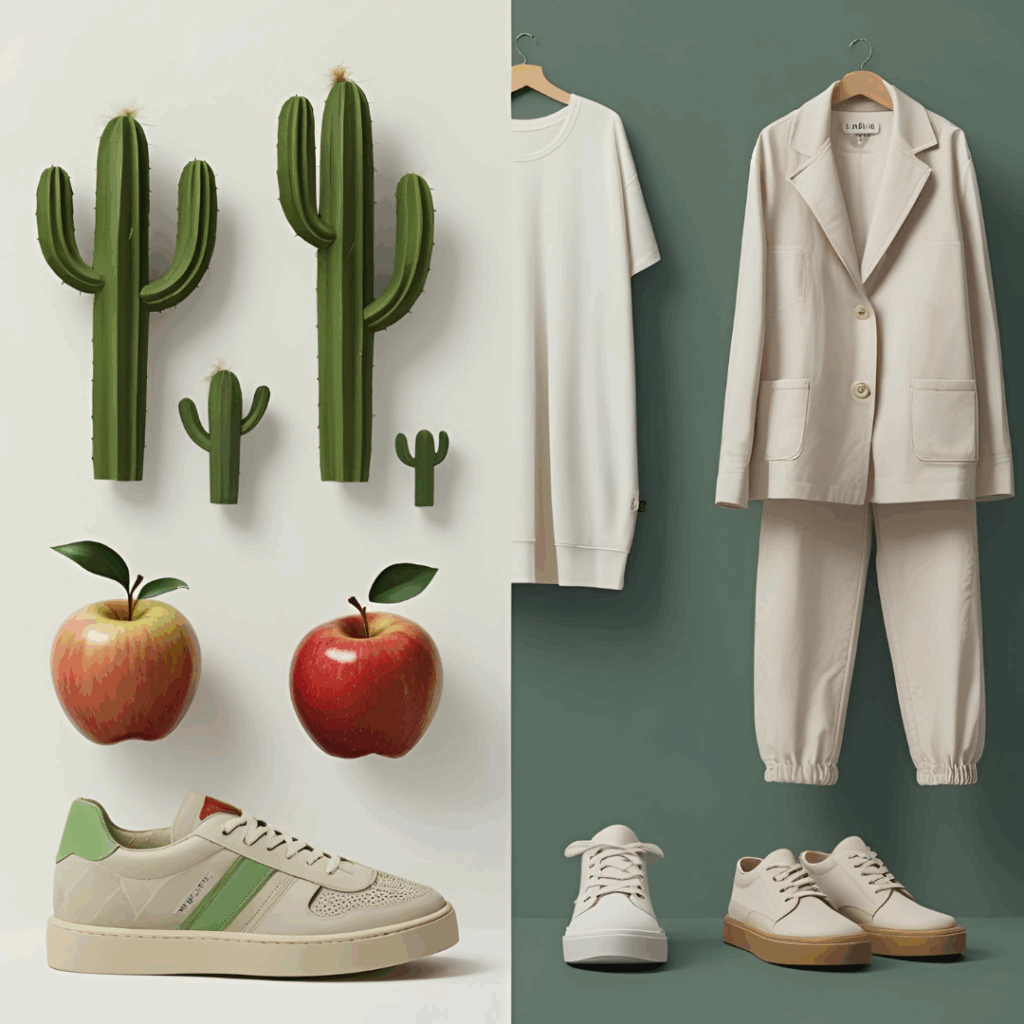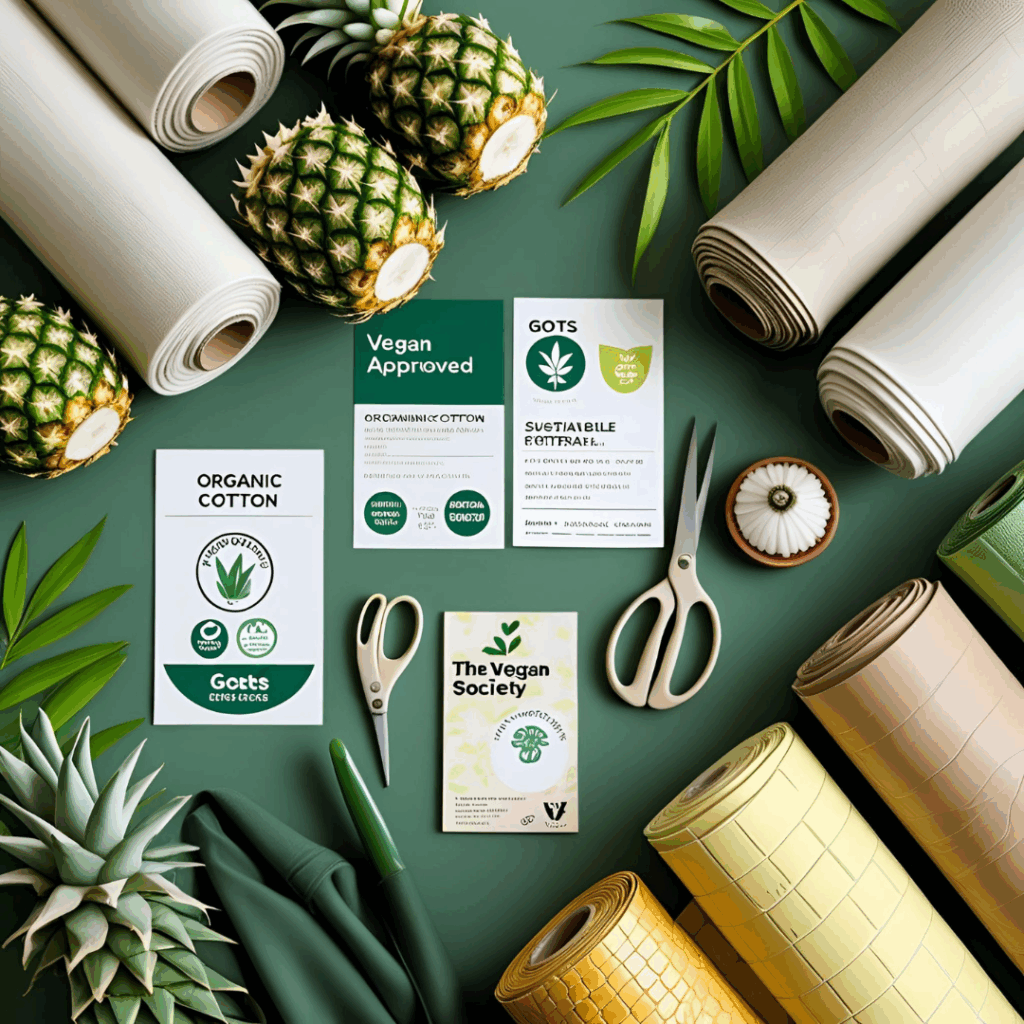The growing concern for the environment and animal welfare has driven a revolution in the fashion industry. Terms like vegan fashion and sustainable fashion are increasingly present in conversations about conscious consumption. But for many, the distinction between these two concepts still raises questions.
If you want to better understand what truly differentiates vegan fashion from sustainable fashion and how they can impact your consumption choices, this complete guide is for you. We will explore the characteristics, goals, and practices of each, helping you make more informed decisions aligned with your values.
What is Vegan Fashion?
Vegan fashion is a segment of fashion that completely excludes the use of any animal-derived materials. This includes leather, wool, silk, feathers, fur, and any other components derived from animals. Additionally, vegan brands reject animal testing during the manufacturing process of their products.
Main characteristics of vegan fashion:
- Animal-free materials: Use of alternatives like synthetic leather, plant-based fabrics (cactus, pineapple, apple), organic cotton, and recycled polyester, among others.
- Prohibition of animal testing: Vegan brands do not test their products or components on animals, ensuring no living being is harmed in the process.
- Focus on animal rights: The primary commitment is to avoid cruelty and animal exploitation at all stages of the production chain.
- Certified products: Many brands seek internationally recognized vegan certifications, such as those from The Vegan Society or PETA, to prove the authenticity of their products.
Practical example:
A vegan sneaker will never use animal leather. It may be made with innovative materials such as vegetable leather (produced from cacti or apples) or other recycled materials, ensuring that production did not involve animal exploitation.


What is Sustainable Fashion?
Sustainable fashion is a broader concept encompassing production, consumption, and disposal practices that minimize environmental impact and promote social justice throughout the value chain. It is important to note that not all sustainable fashion is vegan, and vice versa, although both share the goal of more ethical consumption.
Main characteristics of sustainable fashion:
- Responsible use of resources: Significant reduction of water, energy, and virgin raw materials consumption during production.
- Eco-friendly and recycled materials: Preference for organic cotton, recycled fabrics (from PET bottles, for example), low-impact natural fibers, and biodegradable materials.
- Ethical processes: Guarantee of fair working conditions, decent wages, and worker safety, as well as promotion of fair trade and reduction of waste during manufacturing.
- Durability and lifecycle: Development of products made to last, encouraging reuse, repair, and recycling to extend product life.
- Carbon footprint reduction: Efforts to minimize greenhouse gas emissions in all stages of production and logistics.
Practical example:
Imagine a jacket made with recycled fabric and dyed with natural dyes, produced by a factory that ensures fair wages and a safe working environment. This is a classic example of sustainable fashion because it focuses on both environmental and social impact.
Main Differences Between Vegan and Sustainable Fashion
| Aspect | Vegan Fashion | Sustainable Fashion |
|---|---|---|
| Main focus | Avoid animal products and by-products | Minimize environmental impact and promote social justice |
| Materials used | Synthetic, plant-based, recycled (no animal origin) | Organic, recycled, natural, and sometimes animal-based (e.g., responsibly sourced wool) |
| Animal testing | Strictly prohibited | Not always prohibited (depends on the brand, but generally avoided) |
| Social ethics | Emphasizes animal rights | Includes workers’ rights, communities, and environment |
| Exclusion of leather and wool | Always | May use if responsibly and ethically sourced (e.g., well-cared sheep’s wool) |
| Environmental impact | Varies depending on material (e.g., synthetics) | Prioritizes reduced impact throughout product lifecycle |
Where Do Vegan and Sustainable Fashion Overlap?
Despite the differences, the good news is that many consumers and brands are working to combine vegan and sustainable fashion, creating products that respect both animals and the planet.
- Brands that use organic cotton and vegetable leather: Combine the avoidance of animal products with low-impact agricultural practices.
- Recycled and vegan products: Avoid animal exploitation while reducing pollution and waste.
- Dual certifications: Some brands seek certifications that guarantee both vegan commitment and sustainable practices, offering the best of both worlds.
Why Is It Important to Understand This Difference?
Understanding the differences between vegan and sustainable fashion is crucial to aligning your consumption choices with your personal values—whether for animal respect, environmental preservation, or both.
Additionally, this clarity avoids confusion at purchase time, allowing you to select products that truly meet your expectations and contribute more effectively to a better future and a more conscious fashion industry.

How to Choose Between Vegan and Sustainable Fashion?
- If your primary value is animal welfare, prioritize vegan products with recognized certifications.
- If you seek a broader environmental and social impact, focus on brands with certified sustainable practices addressing the entire production chain.
- If possible, look for products that are both vegan and sustainable, combining the best of both worlds for even more conscious consumption.
Vegan fashion and sustainable fashion are complementary concepts but with distinct focuses. While vegan fashion concentrates on excluding all animal materials and testing, sustainable fashion prioritizes a more ethical and responsible production process regarding the environment and people.
Understanding these differences is fundamental to consuming more informedly and consciously, contributing to a fairer, healthier fashion sector aligned with the major environmental and social challenges of our time.
💬 Want to share your experience or questions about vegan or sustainable fashion? Leave a comment below!
🔁 Enjoyed the content? Share this guide with friends who are also seeking more conscious consumption!







